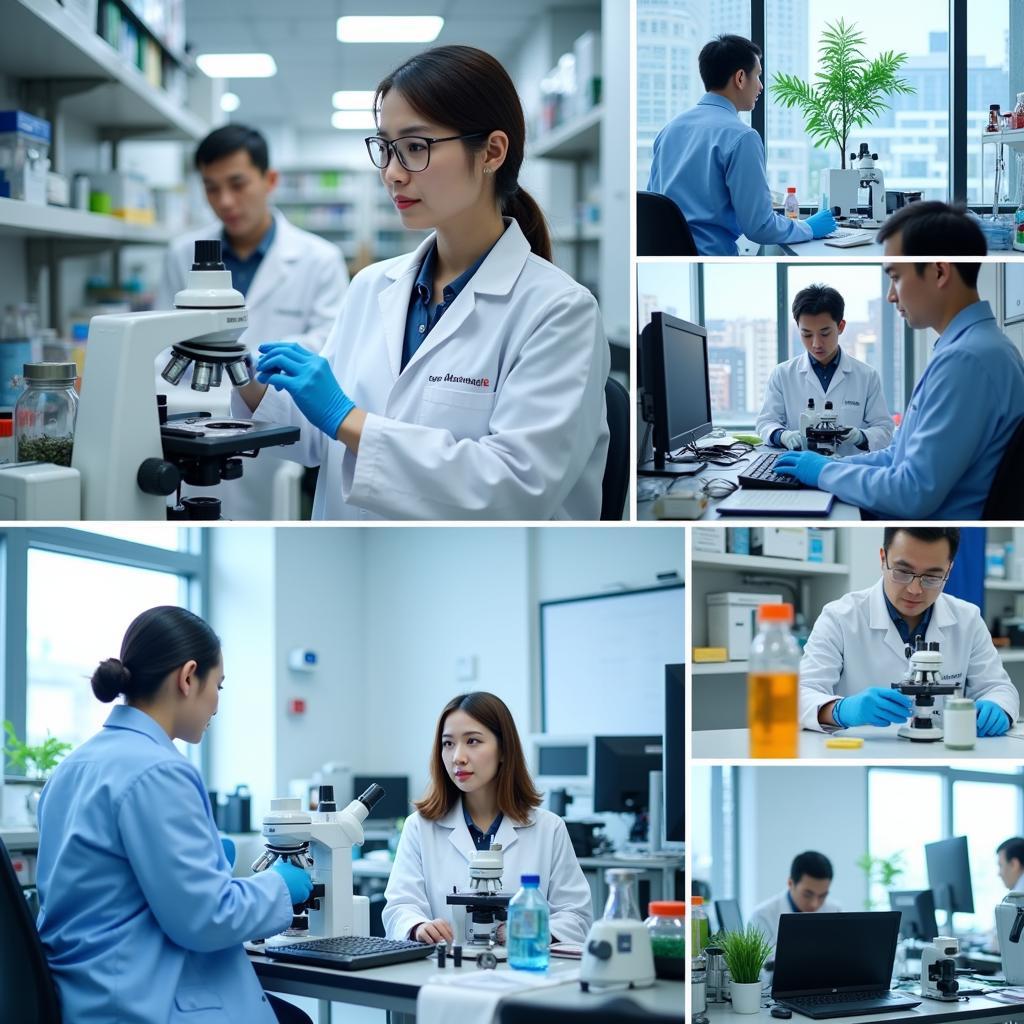ASEAN life science is experiencing a period of unprecedented growth, driven by a rising middle class, increasing healthcare expenditure, and a growing focus on research and development. This dynamic sector encompasses a wide range of areas, including pharmaceuticals, biotechnology, medical devices, and healthcare services, offering exciting opportunities for both local and international players.
The Drivers of ASEAN Life Science Growth
Several factors are contributing to the rapid expansion of the ASEAN life science sector. The region’s large and youthful population presents a significant market for healthcare products and services. Economic growth is fueling increased healthcare spending, as individuals prioritize their well-being and seek access to better medical care. Governments across the region are also recognizing the importance of life science and are investing in infrastructure, research initiatives, and regulatory frameworks to support the industry’s development.
Rising Middle Class and Increased Healthcare Expenditure
As ASEAN economies continue to grow, a burgeoning middle class is emerging with greater disposable income and a higher demand for quality healthcare. This increased purchasing power translates into greater expenditure on healthcare services and products, driving the growth of the life science sector. This demand is not only for treatment but also for preventative care and wellness products, further expanding the market.
 ASEAN Rising Middle Class Drives Healthcare Spending
ASEAN Rising Middle Class Drives Healthcare Spending
Government Initiatives and Regulatory Frameworks
Governments across ASEAN are actively promoting the development of the life science industry through various initiatives. These include investments in research and development, the establishment of dedicated life science parks and zones, and the implementation of supportive regulatory frameworks. These efforts aim to attract foreign investment, foster innovation, and create a conducive environment for the growth of the sector.
Focus on Research and Development and Technological Advancements
ASEAN is increasingly becoming a hub for research and development in life science. The region’s diverse population and unique disease profiles offer valuable opportunities for clinical trials and the development of innovative therapies. Furthermore, technological advancements in areas such as genomics, artificial intelligence, and big data analytics are transforming the healthcare landscape and opening up new possibilities for personalized medicine and improved healthcare delivery.
 ASEAN Life Science Research and Development
ASEAN Life Science Research and Development
Opportunities and Challenges in ASEAN Life Science
While the ASEAN life science sector presents significant opportunities, it also faces certain challenges. Navigating the diverse regulatory landscape across different countries can be complex. Addressing the issue of affordability and ensuring access to quality healthcare for all remains a key priority. Developing a skilled workforce to meet the growing demands of the industry is also crucial.
Navigating the Regulatory Landscape
Each ASEAN member state has its own regulatory framework for life science, which can create complexities for companies operating across the region. Harmonizing regulations and streamlining approval processes would facilitate greater cross-border collaboration and encourage investment.
Ensuring Affordability and Access
Making healthcare affordable and accessible to all segments of the population is a major challenge. Innovative financing models and public-private partnerships are needed to address this issue and ensure that the benefits of life science advancements reach everyone.
Developing a Skilled Workforce
The rapid growth of the life science sector requires a skilled workforce. Investing in education and training programs to develop expertise in areas such as biotechnology, pharmaceuticals, and medical device manufacturing is essential for the long-term sustainability of the industry.
The Future of ASEAN Life Science
The future of ASEAN life science looks bright, with continued growth and innovation expected in the years to come. The region is poised to become a major player in the global life science arena, driven by its demographic advantages, economic growth, and increasing focus on research and development.
 ASEAN Life Science Future Innovation
ASEAN Life Science Future Innovation
Conclusion
ASEAN life science is a dynamic and rapidly evolving sector, offering immense potential for growth and innovation. By addressing the challenges and capitalizing on the opportunities, ASEAN can solidify its position as a leading hub for life science in the global landscape. The future of ASEAN life science rests on continued collaboration, investment, and a commitment to improving the health and well-being of the region’s population.
FAQ
- What are the key drivers of growth in the ASEAN life science sector?
- What are some of the challenges facing the ASEAN life science industry?
- How can governments support the development of the life science sector in ASEAN?
- What are the opportunities for foreign investment in ASEAN life science?
- What is the future outlook for the ASEAN life science industry?
- How does the rising middle class impact ASEAN life science?
- What role does research and development play in the growth of ASEAN life science?
Need support? Contact us 24/7: Phone: 0369020373, Email: [email protected] or visit us at: Thon Ngoc Lien, Hiep Hoa, Bac Giang, Vietnam.

